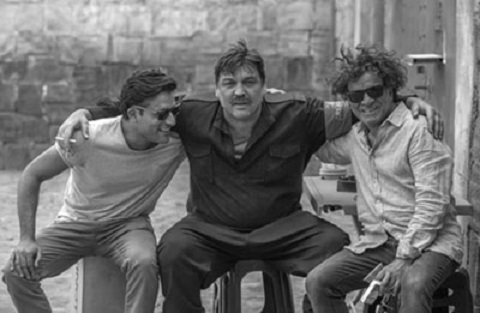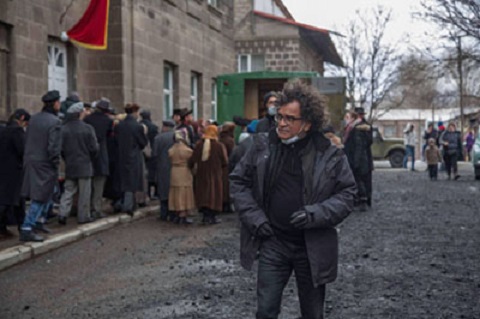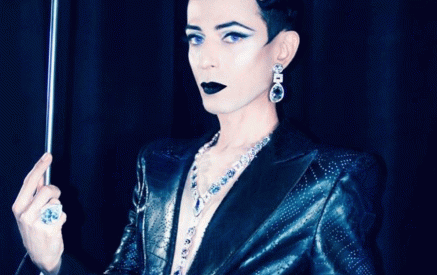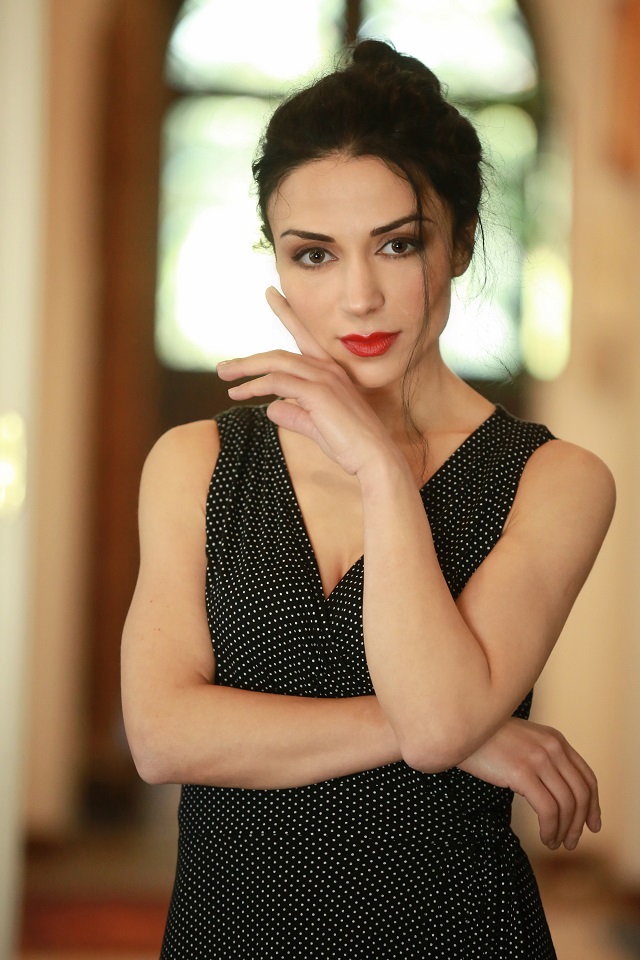YEREVAN/NEW YORK CITY — Cinematographer and director Ghasem Ebrahimian was born in 1953 in Iran. He studied film at the University of New York. In 1977 he made his first (short) film, “Willie,” which won best drama award in 1981 and was shown in many festivals and American and European TV channels. In 1982 he founded the production company “Ebra Films” with Coleen Higgins; together they directed more than 25 short documentary films.
Ebrahimian also directed “The Suitors” (1988), “The South Bank Show” (TV series documentary, co-director, 2002), “Logic of the Birds” (co-director, 2002), “The Sacred and the Absurd” (2005) and “Roads to Mecca” (2010), often based on his own scripts.
I met and Ghasem Ebrahimian in Yerevan, where he spent several months in the first half of 2020 working as a director of photography on a feature film project with a working title “Amerikatsi” (American) by Michael Goorjian, produced by the People of Ar film studio of Armenia (producer – Arman Nshanian). It was a great pleasure to work and socialize with that very positive, cheerful person, sharing common interests in cinema, Iran and Armenia.
Read also
Ghasem jan, your activities in film is quite versatile. What do you consider yourself?
I consider myself a filmmaker and a director of photography, although I have worked as writer and director on my own personal projects.
What are the main subjects you were interested in?
Looking back at my own work I think my main subjects are about displacement that involves some sort of journey.
In film production the DOP is considered the second person after the director. I think, actually the most part of the visual success of a movie depends on camera work. How do you characterize the DOP’s role in the creation of a film?
The DoP’s role begins early on, once the script is presented. It takes many months before the camera is rolling. The collaboration between the director and cinematographer is quite essential. It is through this cooperation that the look and mise-en-scene of the film is established. There is a constant dialogue and attention to the translation of a scene into cinematic art form. The major focus then goes towards HOW it is done and WHY it is done. The major and basic considerations are: camera angle, composition, continuity, close-ups and editing.
Although you received your film education in the US, does Iranian cinema have some influence on you?
There are many influences that I have had, Iranian cinema and literature included. Cinema has no borders. I always remember my father telling me: “If you want to know a country, watch the movies they make.” I have been fortunate to have been exposed to world cinema and it has given me so much inspiration to this day.
I was surprised to find out that you have some Armenian heritage. Iranian Armenians usually never been mixed with local people; your family history seems to be unusual.
Maybe unusual in recent times and after the Iranian revolution, but Armenian and Iranian heritage goes back to many centuries, and intermarriages were not uncommon.
My father had a well-known restaurant. I lost my father to a car accident more than thirty years ago.
My Armenian grandfather was a wine maker in the city of Neyshabur. Unfortunately, my father lost his dad during a horseback riding accident when my father was only 2. My grandmother, who was Iranian, then took my father to another city and raised him in another household. So my father never really got to know his father; nor did I. My father was a film enthusiast and always encouraged me to watch movies. When I was a teenager in high school he bought me a super 8 mm camera. After high school he sent me to America to study cinema. By 1980 I graduated from film school.

Rodin Hamidi (first assistant camera/camera operator), Hovik Keuchkerian (actor), Ghasem Ebrahimian at the film set of “Amerikatsi.” June, 2020 Ashtarak, Armenia
Because of this weird world situation, last year you spent almost half year in Yerevan, including the forced lockdown in condition of state of emergency. How you would characterize this period of your life?
Although the pandemic slowed down our production, we were so lucky to continue and finish the film. Perseverance paid off at the end. I consider it the silver-lining that allowed for more days of filming. We were super lucky as no one on the cast and crew had a health issue.
Did you get a special feeling to be in your ancestor’s country?
When I am asked that question over the years, I am reminded of a poem by Iranian poet Nima Yоushij. The poem starts with: “The world is my home.” Of course, to work in Armenia was a dream that came true.
How did you connect in Michael Goorjian’s project?
Sol Tryon, our producer whom I have worked with over the past 20 years, introduced me to Michael.
What kind of advantages and disadvantages are there to shooting in Armenia?
Over the years I have had the privilege to work in many countries: France, Italy, UK, Indonesia, Iran, Morocco, Peru, Japan, and the US. What is so moving to me that when you work with film professionals in these countries, there is a universal language of cinema that emerges from these collaborations. I may not know the local language, but the language of cinema drives us to be able to work with one another. In Armenia I had a wonderful relationship with all cast and crew: the gaffer, grip, sound, costume and art department. The language of cinema was there to guide us!
Now you have many friends in Armenia, who always will wait for your return.
I would be a great privilege and an honor to come back to Armenia. Leaving Armenia and soon after hearing that the senseless war had broken out was truly heartbreaking. I do hope that peace will prevail for Armenia. It would be an amazing gift for me to come back to Armenia for the premier of the film and catch up with all my Armenian friends and colleagues. I truly miss Armenia.
Main Photo Caption: Ghasem Ebrahimian



























































